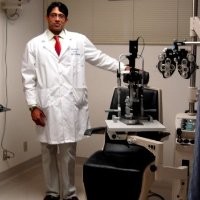Glaucoma, a group of diseases causing damage to the optic nerve and potentially leading to vision loss, affects approximately three million people in the U.S., according to the Centers for Disease Control and Prevention. The early detection of this condition is crucial to curbing vision loss, but many individuals in the initial stages of glaucoma remain unaware of their condition. This is primarily because its primary symptom, a slight elevation in eye pressure due to fluid buildup around the cornea, is usually undetectable.
Typically, one-time measurements of eye pressure during eye exams are taken using “air puff tests,” which can be uncomfortable for the patient. These tests, while necessary, are unable to continuously monitor the subtle variations in pressure that might signal the onset of glaucoma. Researchers, therefore, have been exploring more comfortable and continuous detection methods. One such method under consideration involves the use of contact lenses that can transmit signals to receptor glasses. However, their accuracy can be compromised by changing temperatures, such as when one steps out into cold weather.
Acknowledging this challenge, Dengbao Xiao and his team have developed a prototype “smart” contact lens that can accurately measure and wirelessly broadcast real-time signals about eye pressure across a broad range of temperatures. Xiao and his colleagues created two tiny spiral circuits, each having a distinct natural vibration pattern that changes when minutely stretched, like when there are changes in an eye’s pressure and diameter.
They incorporated these circuits into contact lenses by encasing them between layers of polydimethylsiloxane, a standard contact lens material. With a coil connected to a computer held near the lens, they wirelessly captured the vibration patterns of the embedded circuits. The transmitted signals remained unaltered during tests designed to replicate eye movement, extended exposure to moisture (to emulate the damp conditions in the eye), and the wear and tear of daily use.
In lab tests, these novel lenses were applied to three individual pig eye specimens while the ocular pressures and temperatures were controlled. The contact lenses monitored and wirelessly broadcasted pressure data from 50 to 122 degrees F. Pressure readings deviated up to 87% from the actual values when calculated using the signal from only one circuit in the lens. However, using information from both circuits reduced the deviation to merely 7% from the actual value, as it eliminated temperature-related errors.
Xiao and his team believe that their dual-circuit “smart” lens design holds promise for accurate early detection and ongoing monitoring of glaucoma, even in diverse temperature conditions. This research has been funded by the National Natural Science Foundation of China.
For more information about eye care and the latest developments in the field, visit my website and blog at https://shankarnetrika.com/. At Shankar Netrika Eye Centre, we provide comprehensive ophthalmic diagnostic and therapeutic services, including cataract and laser surgeries.


Comments are closed for this post.